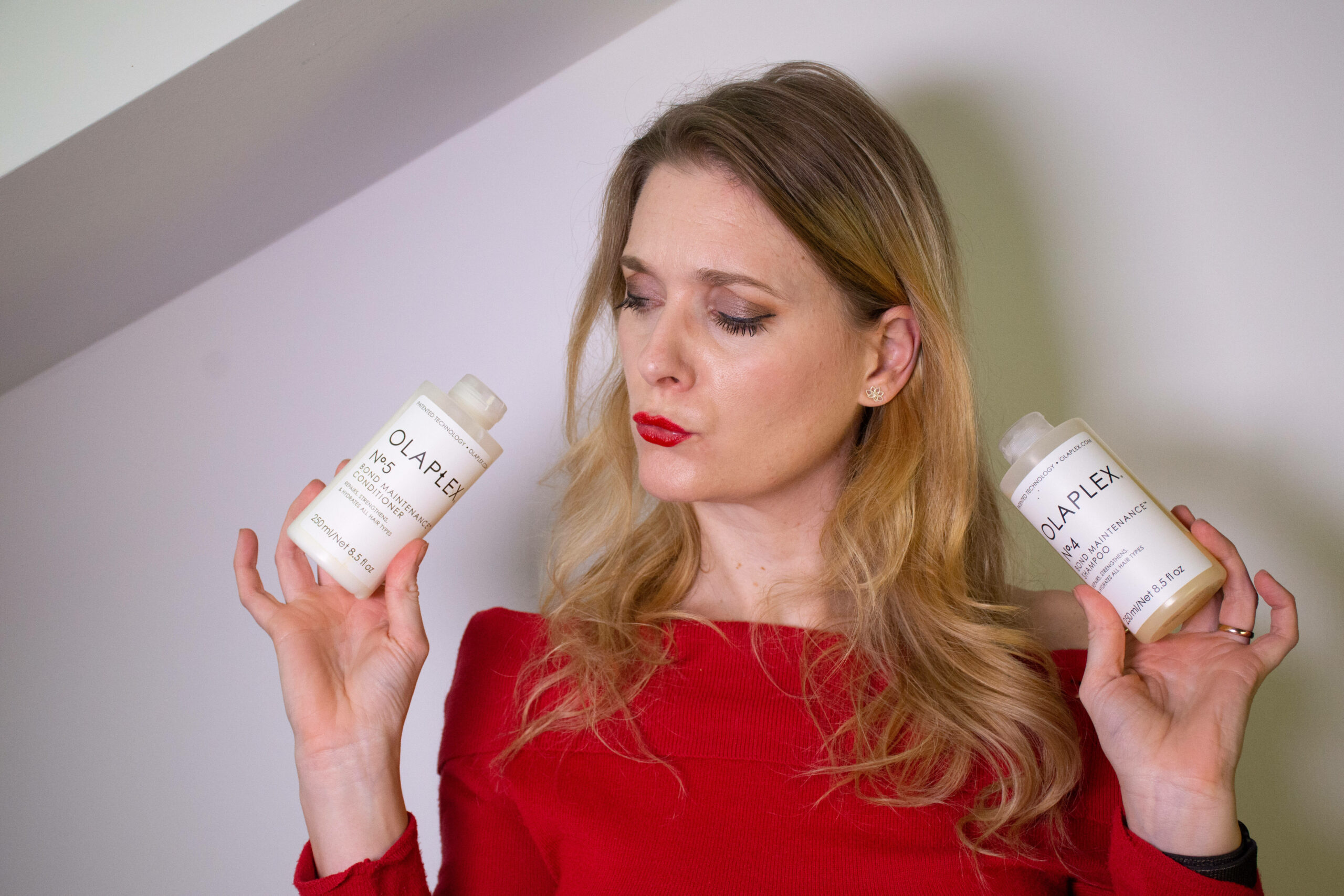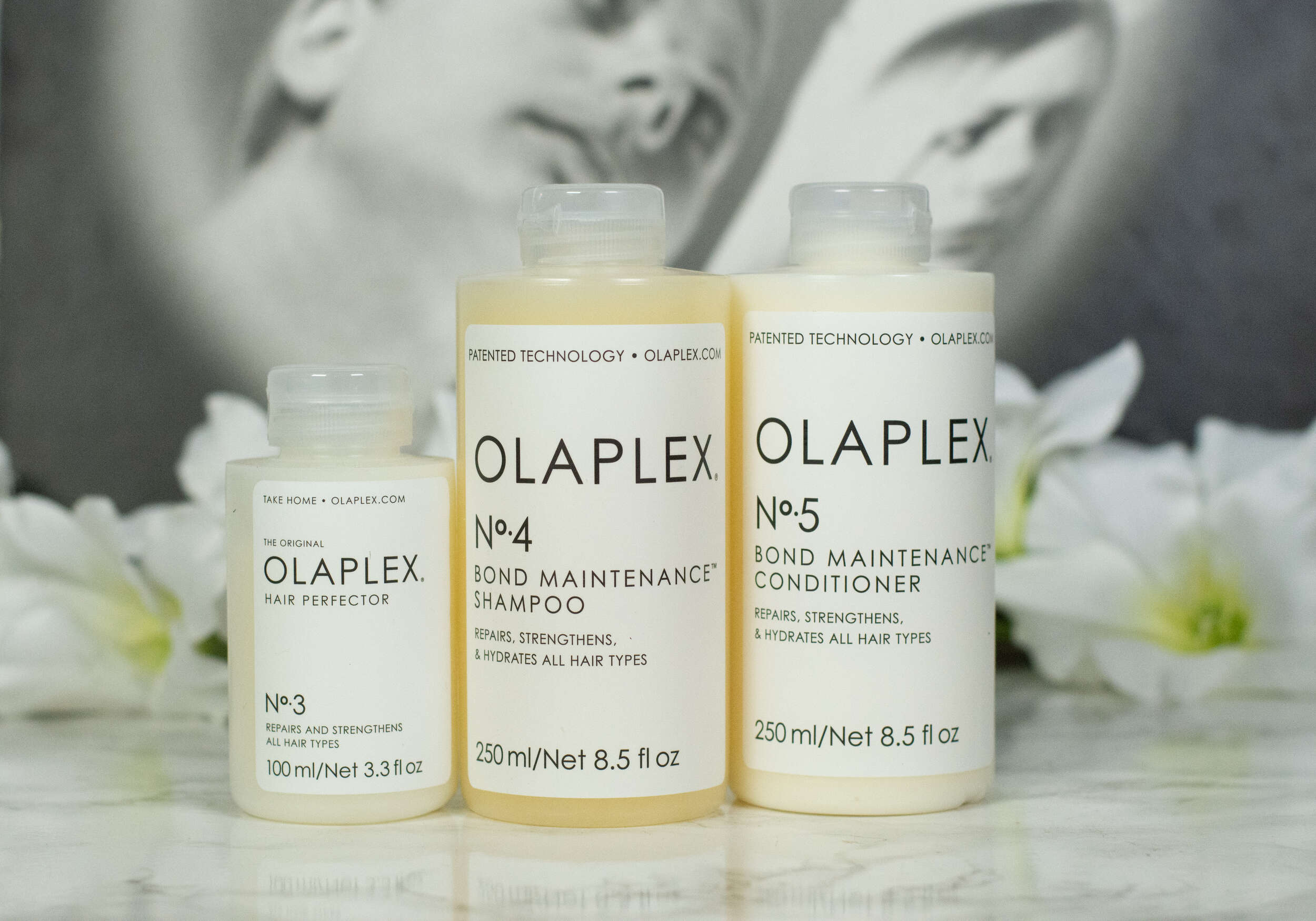ADVERTISEMENT INFO: THIS BLOG POST USES AFFILIATE LINKS. I RECEIVED NO MONEY TO WRITE IT. PLEASE READ DISCLAIMER.
If you only spend half the amount of time and money on being „naturally blonde“ as I do, chances are you have heard of Olaplex. And maybe you already looked into places to go and prices to pay and, upon looking at the „cost per treatment“ section, asked yourself: „Is Olaplex worth it? And how does it really work?“

Well, you have come to the right place – I have been using Olaplex for almost four years now, and apart from giving you my own personal experience, I am here to break down the science behind Olaplex claims.
What Olaplex claims
Our patented active chemistry works on a molecular level to repair damaged and broken bonds in the hair that are caused by chemical, thermal, and mechanical damage. You can use OLAPLEX to restore damaged and compromised hair, or add it to another service to provide the ultimate breakage insurance.
Which Olaplex treatments are there?
Olaplex sells both in-salon products and at home treatments.
The In-Salon Products are the N°1 Bond Multiplier (mixed into bleach for example) that aims to rebuild broken disulfide bonds and the N° 2 Bond Perfector (used after bleach) that rebuilds and restores broken bonds after salon treatments.
At home treatments are the section that has grown the most over the last years (the brand started with N°1, N°2 and N°3 back in 2014). N°3 is an at home treatment aiming to keep repairing the disulfide bridges and prevent hair breakage, N°4 is the shampoo that gently cleanses and (you might have guessed it already) repairs broken disulfide bonds, while N°5 is the corresponding conditioner, again smoothing the hair and repairing the bonds.
New to me (as in I have not tried them myself) are the N°6 Bond Smoother, a styling creme that eliminates frizz by repairing the hair and reduces blowdry time and the newest release, the N°7 Bonding Oil that offers heat protection, shine, softness and, of course, repairs broken bonds (More info: Olaplex No 7 Bonding Oil Review – What makes it special?).
In 2021 they also released Olaplex No 8 Intense Moisture Mask which I at first thought sounded similar to No 3, but it actually is more of a less intense and more smoothing hair mask that might be a good option if your hair isn’t that damaged and just needs some extra love. (More info: Olaplex No 8 vs Olaplex No 3 – Do you actually need both?)

How does the Olaplex Bond Repair work?
Hair structure – What are Disulfide Bonds?
To understand that, we need to do a short excursion into hair and hair structure. We all know that hair is made up mainly of Keratin, which is a special protein. Proteins are made out of Aminoacids, and one Aminoacid that is very common in Keratin is Cysteine.
If we look at Cysteine now, we will see that it contains Sulphur atoms. The special thing about these Sulphur atoms is that they can form bonds, which happens in the hair, and so stabilize the Keratin structure. The way they form the bonds influences your hair type (straight, curly or wavy). The bonds basically form like a ladder in your hair, keeping it strong and healthy.
What happens when you bleach your hair?
In order to lighten the hair, you need to break down the Melanin by using a mixture containing Hydrogenperoxide. The darker your hair initially is, the longer the bleach needs to work as there is more Melanin. The problem with bleach is now that it is pretty reactive, so it does not only break down the Melanin, but also other bonds around it, like the disulfide bonds.
Sound bad? It gets even worse! Disulfide bonds can form again, which means that the damage is usually not permanent. But the Hydrogenperoxide is so reactive, it actually binds to the Sulphur atom, which in return is no longer able to create other bonds – your hair structure is weaker and your entire hair more prone to breakage.
How does Olaplex prevent hair damage?
The active ingredient in Olaplex is Bisaminopropyldiglycoldimaleate. And this nifty little ingredient is able to bind to the free Sulphur atoms quicker than the Hydrogenperoxide. On top of that, it binds to one Sulphur atom on each side, recreating the bond and hair structure. This is why Olaplex, mixed into the bleach, prevents hair damage occuring during the bleaching process. But because these bonds can be broken again as time goes by or as new damage is done to the hair, Olaplex offers the home-treatments for upkeep.
Is Olaplex only effective for bleaching the hair
No. Bonds can break for numerous reasons (heat styling, friction, perms) and Bisaminopropyldiglycoldimaleate doesn’t care for the cause, it just fixes the breakage. So while Olaplex is commonly used during a bleaching process, it is available as separate repairing treatment as well.
What is the difference between the Olaplex products?
All Olaplex products do contain Bisaminopropyldiglycoldimaleate, but in different concentrations, so the salon treatments have the highest concentration, the at home treatments a lower one. Between the home treatments, it is mainly the way of using them that sets them apart.
The Olaplex N°3 one is supposed to be used as a treatment on damp hair around twice a week, so you wet your hair, work it in and leave it on for 10-20 minutes. After that you just shampoo and condition your hair as you usually would. If you use this one, there is theoretically no need for the Shampoo and Conditioner, as the amount of Bisaminopropyldiglycoldimaleate is enough for upkeep between salon treatments, but to be completely honest, it is quite tedious. I don’t usually have a lot of time on my hands, so getting my hair wet and then waiting for 20 minutes before I can even START to wash it is just too much faff.
Which is why I purchased N°4 and N°5, the shampoo and conditioner, to give my hair some Bisaminopropyldiglycoldimaleate with every wash and without the need to stand around with wet hair, waiting. And really I use them much more often, but have one complaint: For my very fine hair, they are a tad too rich, so using them every wash can weigh my hair down. Right now I use them every other wash and use the N°3 if i don’t (and can be bothered).
Is Olaplex worth your money?
That of course entirely depends on your hair type and hair goals. If you have strong and healthy hair and just want to get highlights, probably not. But if your hair is already fine and prone to breakage and you go either a lot lighter or have your whole head done, I think you will benefit from having an Olaplex treatment. And if you do it in salon, why not try it at home as well?
You could of course just use the at home products as well, to make the hair resilient to all the stressors we put it through on a day to day basis even if we don’t alter the color.

Shop my favorite hair care here
Don’t forget to check out the Discount Code Page on top if you want to save some money on your next skincare purchase, or click here to let me build a personalized skincare routine for you.
If you want to get more involved and pick my next topics or see exclusive behind the scenes content, don’t forget you can head over here and become a YouTube Channel Member!


